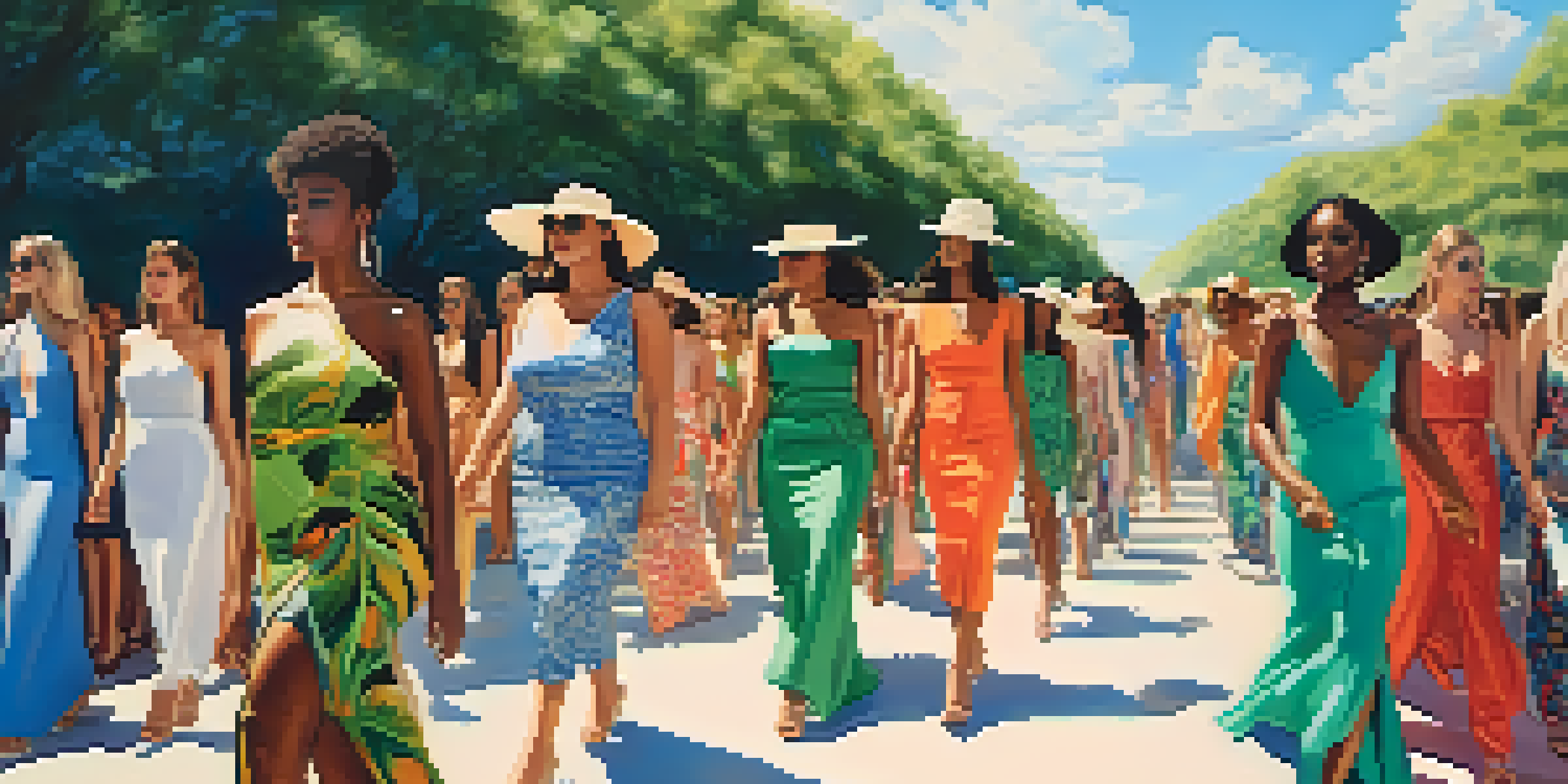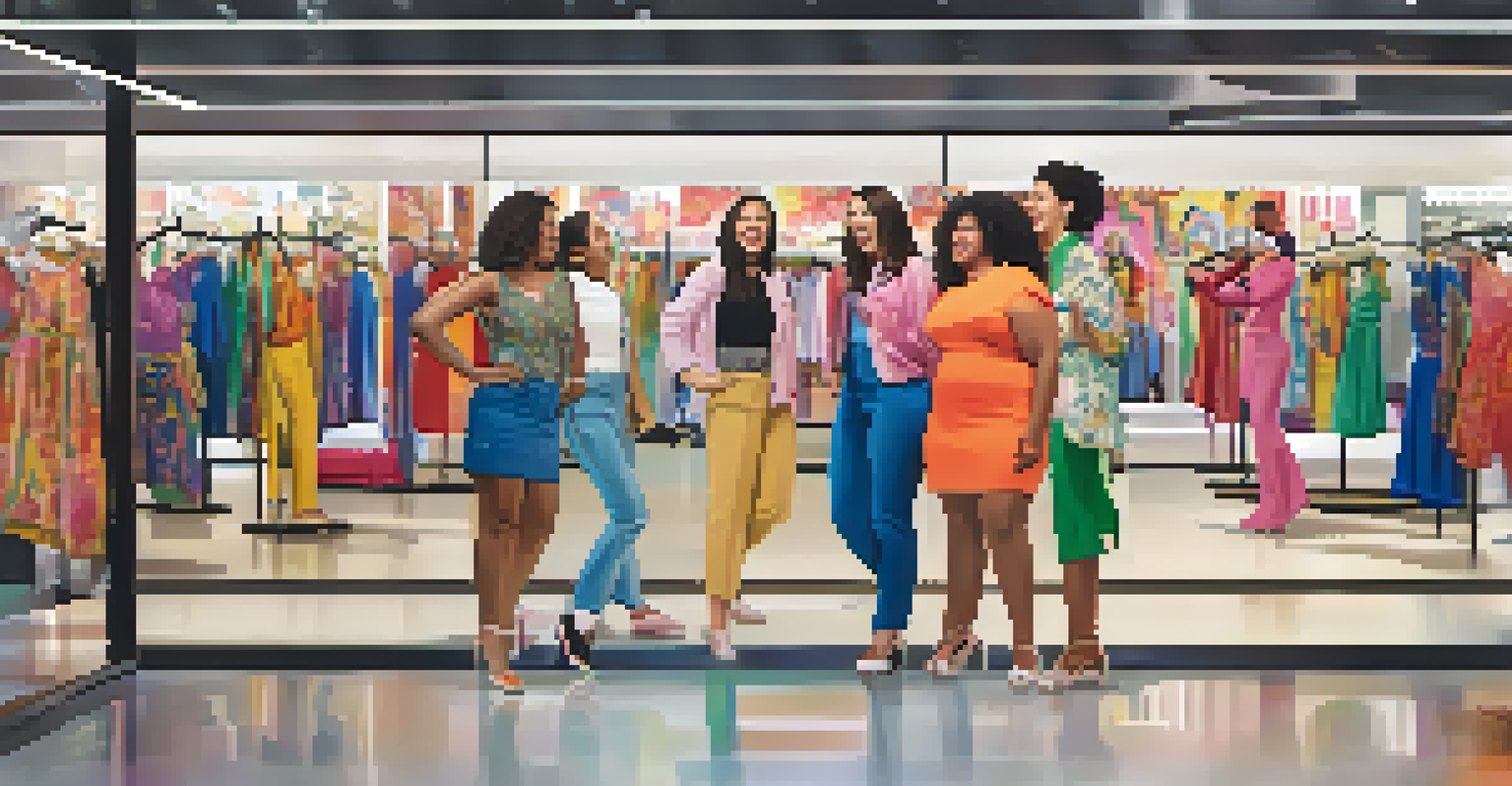The Impact of Fashion Trends on Body Image Perception Today

Fashion Trends: A Double-Edged Sword for Body Image
Fashion trends can uplift or undermine body image, creating a complex relationship. For many, the latest styles can serve as inspiration, encouraging self-expression and confidence. However, when trends favor unrealistic body types, they can lead to negative self-perception and dissatisfaction.
Fashion is the armor to survive the reality of everyday life.
Take, for example, the rise of social media influencers promoting specific body ideals. Their curated images often set standards that many feel pressured to meet, making it easy to compare oneself unfavorably. This constant exposure can distort reality, leading to unhealthy body image perceptions.
Ultimately, while fashion can empower, it’s crucial for individuals to recognize the influence of trends. Understanding this impact allows for a more balanced view of self-worth, independent of fleeting styles.
The Role of Social Media in Shaping Fashion Norms
Social media platforms have transformed how fashion trends emerge and spread, often at lightning speed. With influencers showcasing their outfits daily, followers are bombarded with images that can shape their perception of what is attractive. This can create an overwhelming need to conform to these trends.

However, this rapid dissemination of fashion can also lead to a push for diversity. As more people share their unique styles and body types online, it challenges the traditional norms of beauty. This shift encourages acceptance and can positively influence body image for those who feel marginalized.
Fashion Trends Affect Body Image
Fashion trends can inspire self-expression but also promote unrealistic body ideals, impacting individual self-perception.
In essence, social media serves as both a catalyst for idealized body standards and a platform for promoting body positivity. The key lies in how individuals engage with these platforms—focusing on authenticity over comparison.
The Evolution of Beauty Standards in Fashion
Beauty standards in fashion have evolved significantly over the decades, reflecting broader societal changes. In the past, specific body types dominated the runway, often sidelining those who didn't fit the mold. Today, however, there's a growing recognition that beauty comes in various shapes and sizes.
Everyone should be able to see themselves in fashion, and everyone should feel beautiful in their own skin.
This evolution is evident in fashion campaigns that now feature models of diverse backgrounds and body types. Brands are beginning to understand that inclusivity resonates with consumers, leading to a more positive body image among their audiences. When people see themselves represented, it reinforces the idea that they are beautiful just as they are.
Nevertheless, the journey towards true inclusivity is ongoing. While progress has been made, there’s still work to be done to ensure that all bodies are celebrated within the fashion industry.
The Impact of Fast Fashion on Self-Image
Fast fashion has changed the landscape of clothing consumption, offering trendy pieces at affordable prices. While this allows individuals to experiment with their style, it can also contribute to a cycle of dissatisfaction. Many feel pressured to constantly update their wardrobes to keep up with ever-changing trends, leading to a sense of inadequacy.
Moreover, the disposable nature of fast fashion often promotes a throwaway culture that extends beyond clothing. This can lead to a mindset where individuals feel they need to look 'perfect' constantly, which is often unattainable. Consequently, this pressure can negatively impact self-esteem and body image.
Social Media Shapes Fashion Norms
While social media can enforce idealized beauty standards, it also provides a platform for diverse expressions of body positivity.
To counteract this, it’s essential for consumers to cultivate a mindful approach to fashion. Embracing personal style over transient trends can foster a healthier self-image and reduce the pressure to conform.
Cultural Influences on Body Image and Fashion
Cultural backgrounds play a significant role in shaping body image perceptions and fashion choices. Different cultures have varying ideals of beauty, which can be reflected in the clothing people wear. This diversity can empower individuals to embrace their uniqueness, but it can also create tensions when these ideals clash with mainstream fashion trends.
For instance, traditional garments from various cultures often highlight different body shapes and sizes, promoting a sense of pride and identity. However, when these styles are appropriated or misrepresented in mainstream fashion, it can lead to feelings of alienation among those who identify with these cultures.
Recognizing and respecting cultural influences in fashion is vital for fostering an inclusive environment. By celebrating diverse beauty standards, we can challenge narrow definitions of attractiveness and encourage positive body image across all cultures.
The Importance of Body Positivity Movements
Body positivity movements have gained momentum, advocating for the acceptance of all body types and fostering self-love. These movements challenge the unrealistic standards perpetuated by the fashion industry and encourage individuals to embrace their unique bodies. By promoting inclusivity, they strive to create a healthier dialogue around body image.
Social media has played a crucial role in amplifying body positivity messages, with individuals sharing their journeys toward self-acceptance. This visibility not only empowers those who may feel marginalized but also educates others on the importance of self-love and acceptance. The more we see diverse bodies celebrated, the more normalized they become.
Body Positivity Movements Matter
Body positivity movements advocate for acceptance of all body types, challenging the fashion industry's unrealistic standards and promoting self-love.
Ultimately, body positivity movements remind us that self-worth is not determined by appearance. They encourage individuals to redefine beauty on their own terms, fostering a healthier relationship with their bodies and the fashion they choose to wear.
Fashion Brands and Their Responsibility to Promote Diversity
As influential players in shaping body image perceptions, fashion brands have a responsibility to promote diversity and inclusivity. By showcasing a range of body types in their advertising and campaigns, they can help normalize different standards of beauty. This not only benefits consumers but also enhances brand loyalty and trust.
Brands like Aerie and Savage X Fenty have set the bar high by prioritizing body diversity in their marketing strategies. Their success illustrates that embracing all body types can resonate with consumers, fostering a sense of belonging and acceptance. When individuals feel represented, they are more likely to support those brands.

However, it's essential for brands to remain authentic in their commitment to diversity. Tokenism can be damaging, so genuine efforts to include a variety of body types and identities are crucial for effecting real change in the fashion industry.